Sperm whale: a large predator that has no equal (9 photos)
The sperm whale is a huge marine mammal with a number of unusual features. The post continues with interesting facts about the animal. 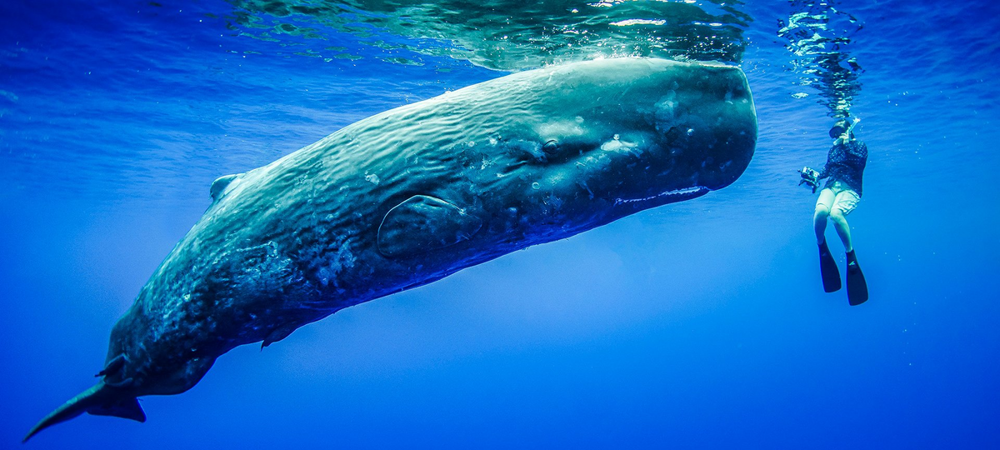
Sperm whales are the largest predators in the entire history of the Earth. Even females reach a length of 11 meters and weigh about 15 tons. Males are on average three times heavier and one and a half times longer. And even this is not a record! In 1960, Soviet whalers reported a male 20 meters long and weighing about 80 tons! Yes, some other whales will be larger, but all the giants of the planet are filter feeders, not true carnivores. 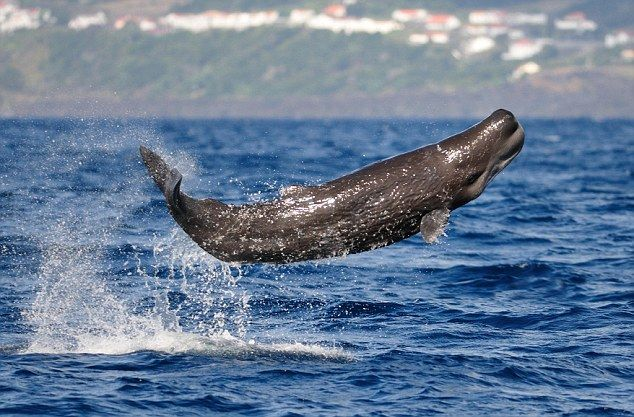
And with such a size, the sperm whale is strong enough to jump out of the water!
Of course, animals of this size have no natural enemies. Even a newborn baby weighs more than a ton. It is automatically too tough for the absolute majority of meat-eaters on the planet. Only killer whales can resist our heroes. However, it is usually only symbolic: an adult sperm whale kills a killer whale with one blow of its muscular tail. 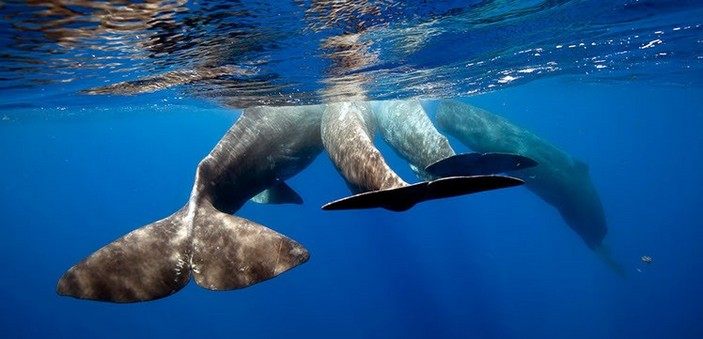
If killer whales want to snack on the children of sperm whales, they will form a “daisy formation.” Whichever side the predators come from, they will be met by their tails ready to attack.
Sperm whales disdained all boundaries and conventions. A toothed whale can spend one year near the equator, and another in the waters of the Arctic Ocean. However, young animals prefer to live in warmer waters, while older animals prefer to live in colder waters, near the poles. 
Regardless of their place of residence, sperm whales skim the cream of the ecosystem. They are not interested in animals less than a meter in length. Give the sperm whales prey worthy of their teeth. To imagine how powerful our hero’s bite was, take a pencil from the shelf. Have taken? Well done: 1 sperm whale tooth is the size of him! 
But to catch the biggest fish, it’s not enough to just be a powerful, toothy hulk. The sperm whale's strength rests on two elephants. The first of them: adaptations to the aquatic environment. The predatory whale is capable of diving to depths of up to 2300 meters and holding its breath for 2 hours! All their systems for capturing and assimilating oxygen work better than ours. The fat layer reliably protects against water of any temperature. And the ribs are attached to the spine by flexible cartilage. Thanks to the latter, their chest is compressed, but does not break under water pressure. 
The second elephant is the developed social sphere of animals. Females and young males gather in groups led by a wise matriarch. Males stay solitary, but they sometimes organize flocks. The animals even hunt together, surrounding the prey, which puts it in a hopeless situation. 
Sperm whales even sleep together! They usually sleep from 18 to 24 hours. Once every hour and a half, the animal comes up and takes a few breaths of air. Apparently, it doesn’t even wake up!
During the hunt, the animals constantly maintain contact with each other using clicks, the volume of which is accelerated to 230 decibels - louder than a jet engine. This effect is created thanks to the super-powerful vocal apparatus, sperm sac and melon. The latter work like huge lenses. 1900 liters of fat amplify the sound and focus it into a narrow cone. Another whale is able to hear the voice of a comrade even from a distance of 5 kilometers! The prey will definitely try to get out of the environment. But where is it? The sound system of sperm whales is not only a way to communicate, but also an echolocator. 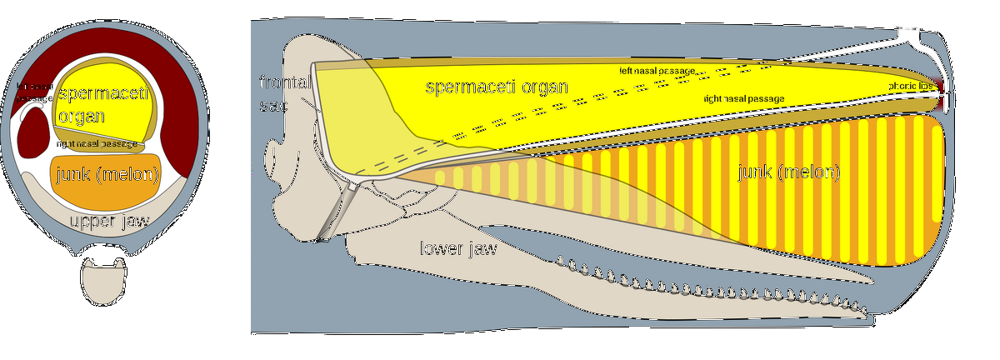
Yes, most of the sperm whale's head is just a soft pad. Spermaceti organ – spermaceti organ. Melon – melon.
Well, large males are strong enough to neglect the help of their comrades. They voluntarily descend into the abyss and challenge the local rulers: giant squids, whose tentacles stretch 20 meters! Of course, cephalopods don’t even have a chance—the difference in mass is colossal. However, they do not give up without a fight: squids leave scars on the skin of sperm whales from suckers and blows from their sharp beak. 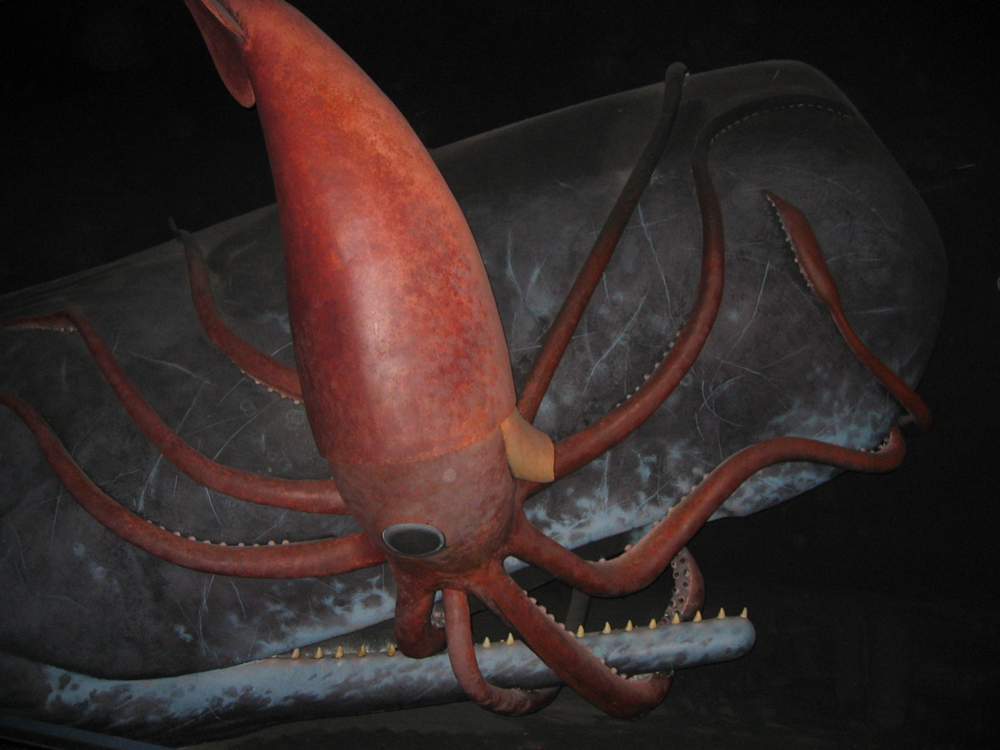
Unfortunately, humanity does not have a single photograph of the epic battle between two sea giants. We observed it only by indirect signs: scars on the skin and beaks of mollusks in the stomachs of whales.
Our heroes need relatively little food - only 3% of their own weight per day. But over the course of a year, the entire population of sperm whales eats an incredible amount of seafood: approximately 91 million tons. For reference: all of humanity eats 120 million tons of seafood over the same period.





























